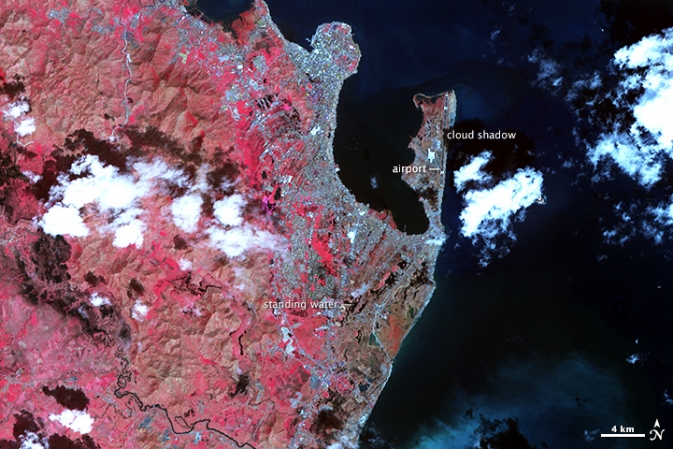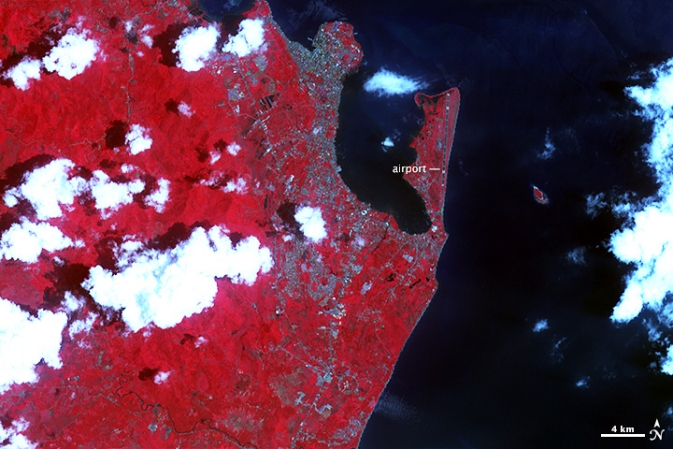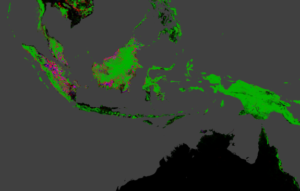
Value and challenges of satellite images: the arts of interpretation
Satellite images are a meaningful source of information for disaster mapping as recently revealed by the example of Haiyan typhoon in the Philippines. They provide a quickly available interpretation on a disaster impacted place and its surroundings that would otherwise be difficult to obtain. The images at the bottom depict the most afflicted typhoon area of Tacloban City and its hinterland in Leyte Province. They were taken by NASA’s ASTER sensor at a height of 700km above the Earth on November 15 this year (upper image) and on April 03, 2004 (bottom image). The images are false coloured (not in RGB format as pictures) in order to discriminate vegetation as red shiny surfaces from built up areas that appear as silver-white (urbanized areas) to tan coloured areas in case of bare soil. Though being from the same location the images differ significantly. The reasons might be changes of land cover and land use within the 9 year time span, but NASA scientists argue that most of those alternations are due to the strong typhoon.
A strong difference in interpretation comes from the vegetation especially toward the interior that appears cherry red in 2004 and almost beige after the typhoon. Since the tropical vegetation is not exposed to seasonal change the pale colour in 2013 was caused by the strong winds of the typhoon uprooting and stripping trees and bushes.
The built up areas in 2013 seem to be sprawled compared to 2004, which could point to intensive urban growth. However, scientists believe that the rise of silver-brown coloured areas was rather caused by the debris that was produced and blown around during the typhoon than by dramatic urban growth. They build their theory on the street grid that is clearly visible in the 2004 image and appears blurred after the storm. Also, the composition of red and brown colours along offshore areas altered to tanned tones due to aggregated mud.
Those examples point out the difficulty of extracting exact information from satellite images and the risk of misinterpretation. I think that knowledge, experience and information on the location are important features to retrieve the value of satellite imagery.
Source: Mashable
Did you like this post on image interpretation? Read more and subscribe to our monthly newsletter!














